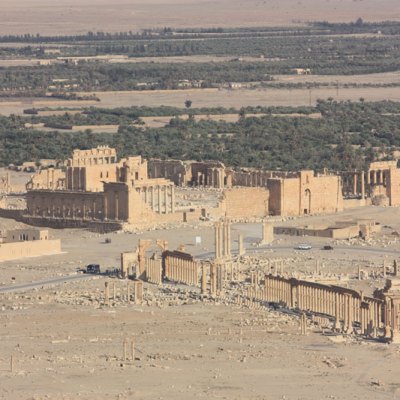The Million Image Database
Institute for Digital Archaeology
View the Digital Innovation of the Year Shortlist
A 3D-rendering of the archway of the Temple of Bel, Palmyra, created by the Institute for Digital Archaeology

Apollo Award Winners 2015
Personality | Artist | Acquisition | Exhibition | Digital Innovation | Book | Museum Opening Award sponsored by Deutsche Asset & Wealth Management
Award sponsored by Deutsche Asset & Wealth Management
The world has lost some irreplaceable cultural treasures this year, most distressingly at the hands of militants in Syria and Iraq. While international organisations struggle to protect the region’s surviving heritage, the Institute for Digital Archaeology (IDA) and its partners have opened up another front – digital preservation and, in some cases, reconstruction.
The Million Image Database is a collaborative international project that aims to compile as complete a photographic record as possible of endangered sites and artefacts in the Middle East. Thousands of specially adapted cameras are being shipped from the IDA’s Oxford base to regional volunteers, whose photographs are uploaded to an online database. This material will be processed to produce virtual, navigable 3D-renderings of the original objects. From spring next year, the evolving digital catalogue will be released as an open-access hub.
Plans are also in place to create physical reconstructions using 3D-printed concrete. The first of these will almost certainly reproduce one of the ancient buildings destroyed by ISIS at Palmyra, Syria: to this end, a public campaign for supplementary images will soon be launched. Such objects are intended for public display and education, but – as the IDA’s director of technology Alexy Karenowska is eager to stress – no in situ reconstructions of lost sites will be attempted without ‘a huge amount of consultation’ with local people.
The Million Image Database extends well beyond the crisis zones of Syria and Iraq. ‘We hope as the situation stabilises we’ll be able to focus on supplementary projects,’ Karenowska explains, and initiatives are underway from Tunisia to Nepal. Quite how the database will ultimately be used remains to be seen. But the IDA already counts UNESCO, the United Arab Emirates, and leading universities among its supporters, and has engaged press and public around the world. Its very existence has helped galvanise an international community appalled by this year’s destruction and uncertain how to respond.
Maggie Gray is web editor of Apollo
View the Digital Innovation of the Year shortlist
 Apollo Award Winners 2015
Apollo Award Winners 2015
Personality | Artist | Acquisition | Exhibition | Digital Innovation | Book | Museum Opening



